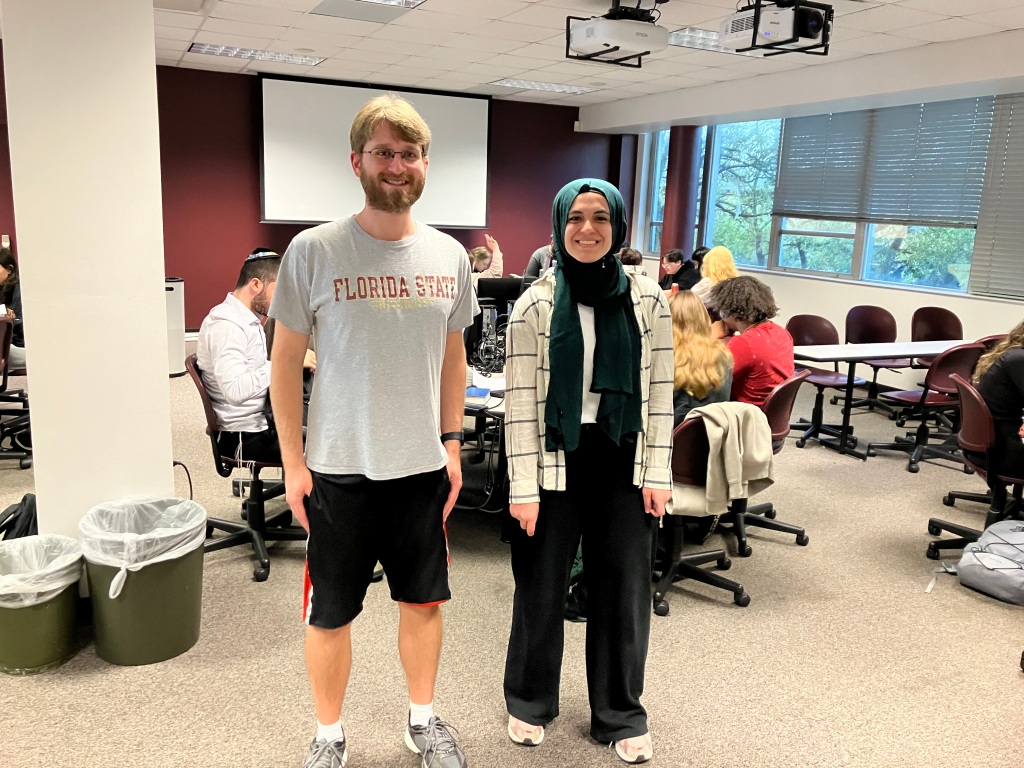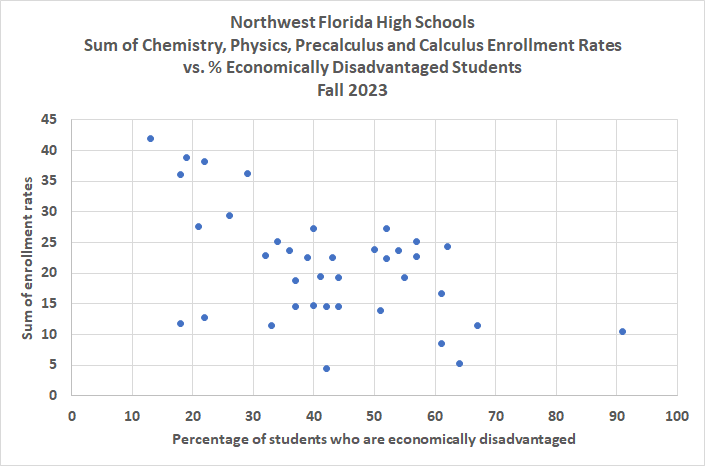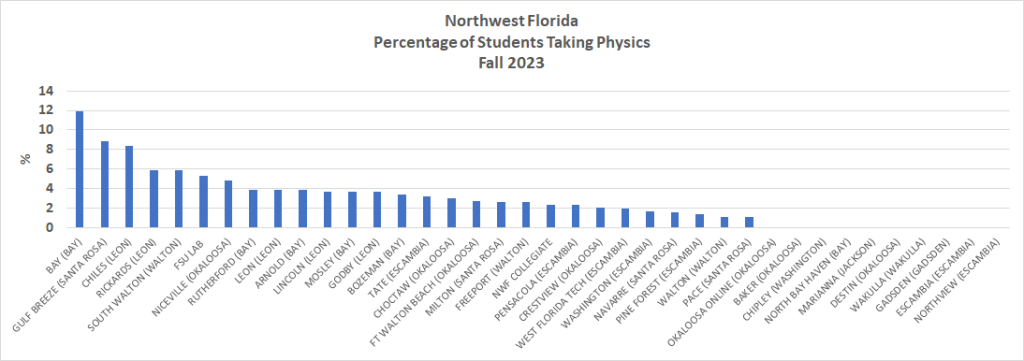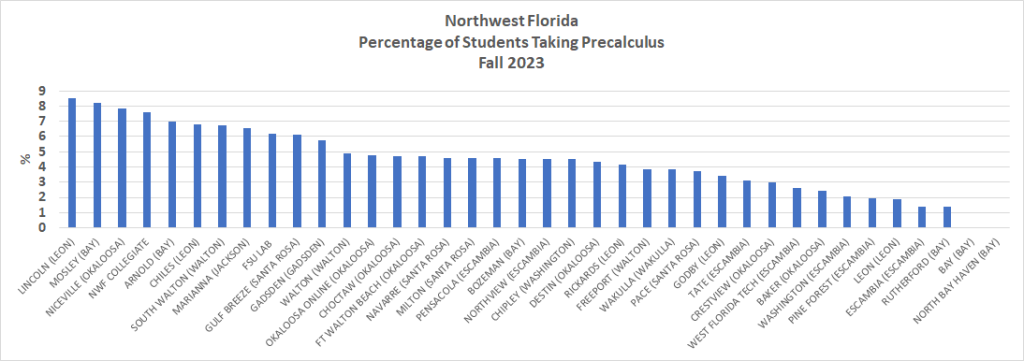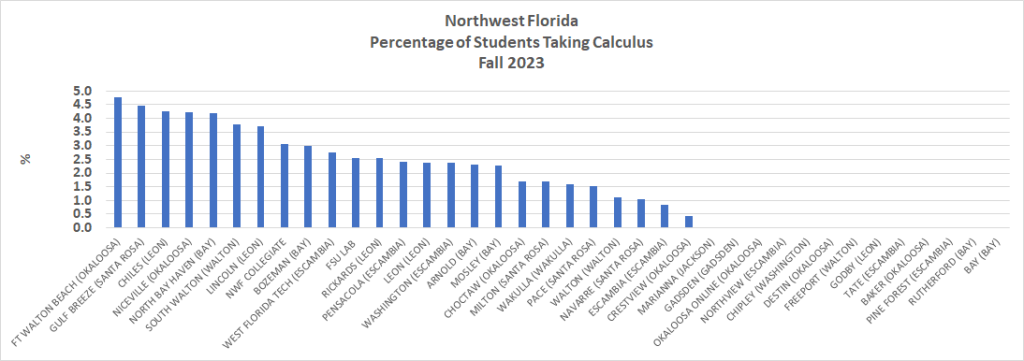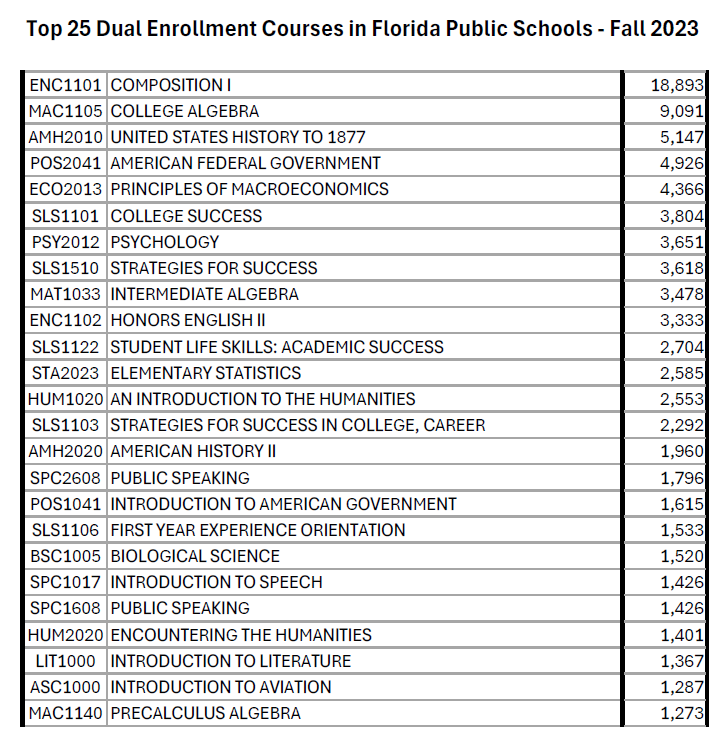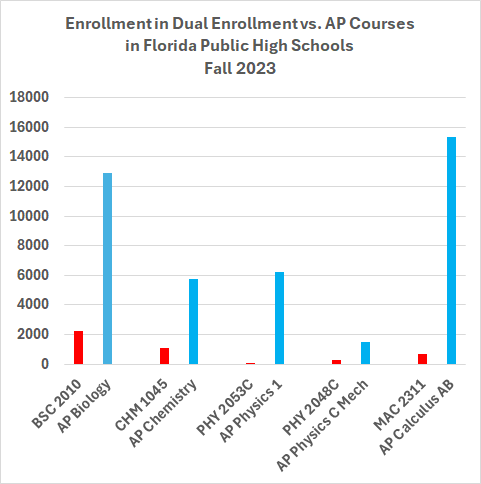You may have heard or read that US News and World Report ranked Florida #1 for education in its annual ratings of states. While higher education was Florida’s stronger suit (ranked #1 in that), the state was ranked a respectable #10 in K-12. One component of the K-12 ranking that I found surprising was that Florida was ranked #5 in “college readiness”.
What is the US News definition of college readiness? It is “the approximate percentage of 12th-graders who scored in the 75th percentile or higher on SAT, ACT or both”. I’ve invested some effort in looking at Florida’s SAT scores over the years. Florida has a high SAT-taking rate: 90% of the Florida high school graduating class of 2023 took the SAT, according to the College Board. If we compare Florida’s SAT results to those of other states that had 90% or more of their 2023 graduates take the SAT, which is the only fair comparison, then Florida looks pretty good on the English Reading and Writing section of the SAT and dismal on the math section.
So why did Florida rank so highly on college readiness with dismal math SAT scores? I have a hypothesis, and I will not prove it here because I don’t have enough information. But here is my hypothesis: While the number of American students taking the ACT and SAT has declined significantly since the pandemic as colleges and universities have dropped the standardized test admissions requirement, the number of Florida students taking the ACT and SAT has increased. A student can’t earn a score in the 75th or higher percentile if she or he doesn’t take a test. So Florida has an edge over most states in the US News college readiness race because nearly all Florida students take at least the SAT if not both the SAT and the ACT.
The two figures below show how the numbers of students taking the SAT and ACT changed from the high school graduating class of 2019 to the class of 2023. Nationally, the numbers of students taking the SAT and ACT declined by 13.8% and 22.2%, respectively. In Florida, those numbers increased by 7.5% and 8.2%.
Why do so many Florida high school students take the SAT and ACT? Florida’s public universities still require standardized test scores for admission, while those in many other states do not. Florida’s college-bound students also want to earn Bright Futures scholarships, and most students must take standardized tests to qualify for those awards. Finally, some students struggling to pass the state’s high school graduation exams in math and English take the ACT and/or SAT hoping to earn “concordant” scores, which then clear the way to graduation. However, students in that latter category probably don’t contribute to Florida’s high “college readiness” ranking.
I haven’t proven anything here. That is, I haven’t debunked Florida’s high college readiness ranking. But it seems likely that that the state’s continued emphasis on college entrance exams has contributed at least a little bit to the state’s high ranking.
Just so you don’t have to look it up: The College Board lists an SAT score of 1150 as the 74th percentile and 1160 as the 76th percentile. ACT lists a composite score of 23 as the 74th percentile and 24 as the 78th percentile.







